Ten Food Textures for Your Baby to Try
- How to help early eaters in phase 1 of baby-led weaning progress beyond puree textures
- What to do if you’re scared that your baby is going to choke if you offer textures other than purees
- How to increase the variety of textures your baby is offered…even if you don’t like to cook
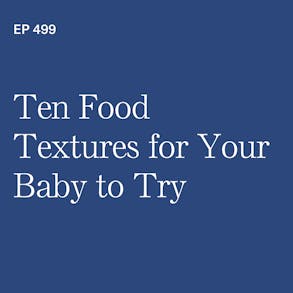
LISTEN TO THIS EPISODE
Episode Description
Name another texture besides puree that your baby can safely eat. Most people can’t describe safe textures for finger foods…but that’s exactly what we’re doing in this episode - running down 10 new food textures for your baby to try…that aren’t purees.

Links from this Episode
- Baby-Led Weaning with Katie Ferraro program with the 100 First Foods™ Daily Meal Plan, join here: https://babyledweaning.co/program
- Baby-Led Weaning for Beginners free online workshop with 100 First Foods™ list to all attendees, register here: https://babyledweaning.co/baby-led-weaning-for-beginners
Other Episodes Related to this Topic

Latest Episodes
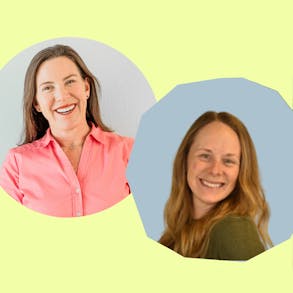
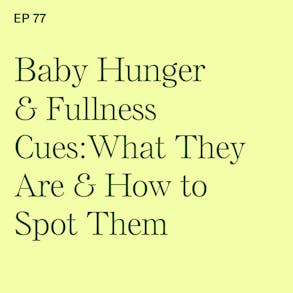
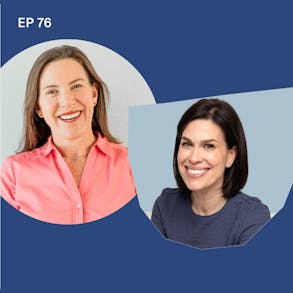
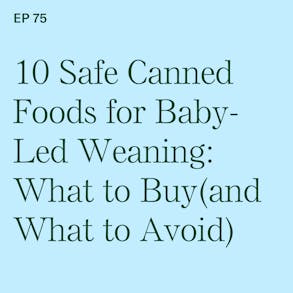
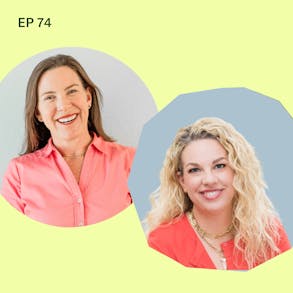
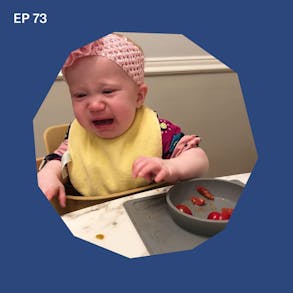
Strollercoaster (0s):
Okay. Parenting is hard for sure, but this is easy. Listening to Stroller Coaster. Stroller Coaster is a podcast hosted by Lynn Smith. She's a mom and former news anchor for NBC and the show's co-hosted by an improv comedian. Stroller Coaster is a place to be entertained to laugh over crazy parenting moments. And I know I, for one, have definitely learned a few new things as I listen along too. Stroller Coaster is an award-winning, top ranked parenting podcast created by Munchkin, the most loved baby lifestyle brand in the world. And the show covers topics that I know are also of interest to you, like how to stay connected to your kids once they're in daycare and school, or what your child is trying to communicate to you when they're crying, and how to hold onto your patients as a parent. You can follow Stroller Coaster on Apple Podcasts, Spotify, or wherever you get your podcast. Go give them a listen for a great time. I, for one, know I've really been enjoying the show and I always need something new to listen to. Check out Stroller Coaster. I think you'll enjoy it as well.
AquaTru (1m 4s):
Working on some personal goals for 2025 and drinking more water is top of the list for me. I am the worst about water. I can work from the second my kids leave from school until they get home, which is just under eight hours. And I realize I don't even stop to take a bathroom break most days. That is horrible. I know, I know I'm not hydrated enough 'cause I don't like the taste of water that much. Enter AquaTru. AquaTru purifiers use a four stage reverse osmosis purification process that removes 15 times more contaminants than ordinary picture filters, which is awesome, but you end up with water that actually tastes good. AquaTru has water purifiers to fit every type of home from installation free countertop purifiers to higher capacity under sink options that even have a wifi connected purifier and mineral boost options. And the AquaTru filters are affordable and long lasting. So there's no change in the filters every two to three months because the AquaTru filters, they last from six months up to two years. And just one set of filters from their classic purifier, it makes the equivalent of 4,500 bottles of water. So it works out to less than 3 cents a bottle. Not to mention the environmental impact that you have by not wasting tons of extra plastic. We just installed ours. And as a former water hater, I do have to say the AquaTru water tastes fantastic, and you don't have to worry about PFAS or other harmful contaminants. I had it delivered straight to my home and it was really easy to set up. AquaTru comes with a 30 day money back guarantee. It even makes a great gift, and listeners of this podcast can get 20% off any AquaTru purifier when you go to aquatru.com. That's A-Q-U-A-T-R u.com and enter the word weaning at checkout. That's 20% off any AquaTru water purifier when you go to aquatru.com and use the promo code weaning W-E-A-N-I-N-G at checkout.
Katie Ferraro (3m 5s):
And if you think about hard boiled eggs, I mean, do not sleep on hard boiled eggs because I feel like everyone gets into the fried egg strips or bigger pieces of scrambled egg, but with a hard boiled egg, you're getting two different Texture opportunities there, right? The rubbery Texture of the hard boiled egg white, that's where the protein, the potentially allergenic part of the egg is located. But again, the yolk has a really valuable nutrition in there too. It's where the fat is, it's where the iron is, it's where the B vitamins are, but the hard boiled egg yolk that's got a really unique mealy Texture. So when you're offering take a hard boiled egg, if you use a hard boiled egg slicer to get it into uniform finger food pieces, your baby can pick it up. They're getting that rubbery Texture of the white plus the mealy Texture of the yolk.
Katie Ferraro (3m 45s):
Hey there, I'm Katie Ferraro, registered dietitian, college nutrition professor and mom of seven specializing in Baby-Led Weaning here on the Baby-Led Weaning with Katie Ferraro podcast. I help you strip out all of the noise and nonsense about feeding, giving you the confidence and knowledge you need to give your baby a safe start to Solid Foods using Baby-Led Weaning. Hello and welcome back. In today's episode, we're going to talk about 10 different food textures for your baby to try. And if you listen to this podcast in sequential order, the episode that just came out before this. So episode 498 was an interview that I did with Marsha Dunn Klein.
Katie Ferraro (4m 26s):
She's an occupational and feeding therapist. She literally wrote the book on pre feeding and we talked about Taste Training. And in that episode, Marsha explained how there's research that shows us that babies explore flavors first and textures second. So we talked a lot about flavor and Taste Training in that episode 498. But today I wanna talk about textures. And if you ask, I would say most parents about starting solid foods. What Texture can babies eat? Well, they see purees. And then people who have heard of Baby-Led Weaning will sometimes mistakenly think, oh, well Baby-Led Weaning just means skipping purees. And it actually doesn't. Purees are an important Texture for your baby to master.
Katie Ferraro (5m 8s):
They're just not the only Texture that your baby can eat. So what I'm sharing today is part of the Texture training. That's a component of my comprehensive online program called Baby-Led Weaning with Katie Ferraro. So in this program, I have three distinct phases of Baby-Led Weaning that your baby moves through the first eight weeks, which is phase one of Baby-Led Weaning. That's where babies try foods one to 40, and we stick to single isolated foods, although those can be of different textures. And then in phase two, which your baby moves from foods 41 to food 80 in the second eight weeks after starting solid foods, we move on to multi textured or combination textured foods.
Katie Ferraro (5m 48s):
We're doing a lot of finger foods of different sizes at that point, but combining different textures. And then in phase three, we're getting your baby ready to move into becoming a toddler and talking about what changes when babies turn one. But part of that program, there's these theory videos, kind of just real short, sweet topics that I cover, and one of them is about Texture. So I wanted to cover that on the podcast. I'm kind of clipping part of that here in this episode. But that program also includes my 100 First Foods content library, where I have videos, recipes, and instructions that show you how to make all the foods on the 100 First Foods list safe for your baby's particular age and stage. So if you like, you know, visual learning and recipes that's there for you if you're picking the five new foods each week that your baby eats.
Katie Ferraro (6m 30s):
But I also have 100 First Foods Daily Meal Plan, and that's where literally each week I lay out the menu, the recipe, the shopping list, and explains exactly how to introduce your baby to a progressingly more challenging series of Texture. So all may move. So in that meal plan, we're actually moving your baby along a continuum of food Texture, starting at food one and ending at food 100 a mere 20 weeks later. So it's 20 weeks of done for you meal plans. All of that is inside of the program. Again, that's called Baby-Led Weaning with Katie Ferraro. And you can sign up at babyledweaning.co/program if you want access to all of that content. So I want to talk a little bit about the trickier textures once we get beyond the simple starter foods.
Katie Ferraro (7m 14s):
What are some of the different textures besides purees that babies can try? Now, there's not a strict classification system for what constitutes, let's say, a rubbery Texture or a stringy Texture. And when starting solid foods in a six to 12 month period, for the most part, we avoid hard, crunchy, or crispy foods, the ones that could potentially be a choking hazard. For earlier eaters, we don't do any raw apples. We don't do stiff pieces of cucumber. We don't do solid pieces of meat like steak or pork chops. Okay? Now, your baby might have some crispy parts of a fritter, for example, and do perfectly well with that if they're handling multi textured foods without problems. So I wanna go through 10 different textures, and I'll start with the first one, which I mentioned, which was purees.
Katie Ferraro (7m 56s):
And as I said, important and worth bearing, saying again that purees are an important Texture for babies to master, but they're not the only Texture that your baby can eat. And you can honor the self-feeding principles of Baby-Led Weaning and still offer naturally pureed foods. Let's say things like oatmeal or unsweetened applesauce or full fat, whole milk yogurt, which is a great way to introduce your baby to cow's milk protein. You can do that using what's called the preloaded spoon approach. Now, the preloaded spoon term and technique was coined by Dawn Winkleman. She's a speech language pathologist. She was just on a few episodes ago in episode 496 talking about the gag reflex. And dawn has this whole approach for starting solid foods, utilizing purees where the baby learns how to feed themselves.
Katie Ferraro (8m 42s):
So babies can learn how to do this preloaded spoon approach and do puree textured, but you do not need to unnecessarily puree a food that you could otherwise offer in a finger food format. So it is developmentally appropriate for babies starting around six months of age to experiment with finger foods. So let's talk about some other textures out there in no particular order beyond purees. Okay? Rubbery is one that comes to mind. A rubbery, textured food that is a choking hazard would be something like a mushroom. Okay? I don't care how you try, you cannot get a solid mushroom that's soft enough to pass the squish test. Okay? We don't, I've tried this with so many different types of mushrooms with so many different preparation methods.
Katie Ferraro (9m 24s):
Most foods, if you boil them to death, they will get soft enough and then they're gonna pass the squish test, and your baby can eat them, not mushrooms, you roast them, you saute. They just get too chewy that a baby could choke on, especially if they're an early eater. But what's an example of a rubbery Texture that's a little bit safer and more malleable? Well, hard boiled egg white comes to mind. If you think about the hard boiled egg white, I like to use a hard boiled egg slicer to slice the hard boiled egg into uniform pieces that make those nice longer strips that your baby can pick up and safely self-feed to themselves. Tofu cubes is kind of another example of a very soft, rubbery Texture. Tofu is one of my favorite ways to introduce your baby to the potentially allergenic food soy.
Katie Ferraro (10m 5s):
Okay? You can do tofu. Just cut into little pieces about the size of your adult pinky finger. I sometimes will use a crinkle cutter to add a little bit of traction and make it easier for the baby to pick up. Okay. I mentioned the crispy Texture earlier, like if you're frying a fritter, we have a lot of recipes in our program that take the whole grain foods like ika and quinoa, amaranth, and those are really, really small pieces of grain that, I'm sorry, you do not wanna pick up off the floor 'cause it's such a pain, but we can work them into fritters, okay? That we fry. We usually do that using egg, but we have a lot of egg-free substitutes that act as binding agents that you can do if you're not doing eggs or you haven't done them yet, but you can get a little bit of a crispy food. Now, we don't want to be so hard that it's going to potentially choke your baby if you do end up with fritters or protein foods that are too dry.
Katie Ferraro (10m 48s):
I recommend topping them with a dipper or a topper or a sauce that's low in sodium and have lots of recipes in the program for low sodium sauces. 'cause you can buy sauces at the store, but they tend to be way too high in salt for your baby. So you can do some crispy pieces if you're frying fritters when it comes to frying, as far as you know, which oil you use, it really does not matter. Whatever oil you use in your household will work for your baby as well. Hey, we're gonna take a quick break, but I'll be right back.
Airdoctor (11m 17s):
Okay. I wish this were not true, but as someone who works in front of a computer or a phone all day, I know that of the average 20,000 breaths that Americans take a day, 90% of those and 90% of our time is being spent indoors, and the indoor air that we breathe can be up to a hundred times more polluted than outdoor air according to the EPA. And indoor air pollutants can lead to respiratory symptoms like sneezing, congestion, scratchy throat, or even more serious health problems like lung and heart disease. So what can we do about it? Well, air doctor has thought a lot about this and they've put their technology to work for you. The air doctor is an air purifier that filters out 99.99% of dangerous contaminants so that your lungs don't have to. So this includes allergens, pollen, pet dander, which is a huge problem in my house, as well as dust mites, mold spores, and even bacteria and viruses. Air doctor comes with a 30 day money backed guarantee. So if you don't love this product, you can just send it back for a refund minus shipping. If you head to air doctor pro.com and you use the promo code weaning, you can get up to $300 off air purifiers, and this is exclusive to podcast listeners, but you will also receive a free three year warranty on any unit, which is an additional $84 value. You can lock up this special offer by going to A-I-R-D-O-C-T-O-R-P-R o.com. That's airdrpro.com, and use the code weaning, W-E-A-N-I-N-G To get started today.
Katie Ferraro (12m 58s):
Another Texture that comes to mind is the mealy Texture. I mentioned hard boiled egg whites constitute a rubbery Texture, but think about the yolk of a hard boiled egg. Okay? That's a great way for your baby to experience a mealy Texture in the white of the egg. Just so you're aware, that's where the protein is, the potentially allergenic part. So when we offer babies eggs, we wanna make sure we're getting them some egg white, so introduce them to that egg protein. But the yolk is also very valuable as well, because the yolk is where the iron and a little bit of the fat and a lot of the other B vitamins live. Okay? So you get that the nutrition benefits from both the white and the yolk, but if you hard boiled an egg, you get both a rubbery Texture and the mealy Texture of the egg yolk tasted lots of Texture opportunities in hard boiled eggs.
Katie Ferraro (13m 39s):
Don't sleep on hard boiled eggs. I think everyone gets into like frying and scrambled, but like another, you know, mashed chickpeas. Okay, some type of other like mashed beans. We have a lot of mashed bean and hummus type recipes that can kind of be a little bit on the mealy side. If you don't add a ton of oil, you maybe also can practice dipping and scooping with those with their spoon, which is nice as well. Let's move on to a stringy Texture. Okay? Some things like meats, for example, we don't offer solid pieces of meat like steak, pork chops for early eaters, but you can make certain cuts of beef or pork and other meats into soft shreddable strips of meat that are kind of stringy in nature. As I always say with meats, if you can shred the meat between your fingers and your thumb, then it's safe for your baby to eat with their gums. So the stringy textures you can think of like the, the consistency of those meats or something like asparagus.
Katie Ferraro (14m 24s):
Also, if you cook your asparagus pretty well done. I know it's kind of slimy, but it has this kind of stringy Texture that if your baby doesn't care if it's slimy, I love to watch babies eat asparagus as far as a sticky Texture goes. Think about the consistency of a food like a buckwheat porridge. So buckwheat is one of the whole grains on the starchy part of our 100 First Foods list, and I love to make just hot cereal. We don't serve it super hot, we don't wanna burn your baby's mouth, but as it cools down, it's a nice thicker Texture that a baby can eat off of a preloaded spoon. But what we also do is if you let the buckwheat porridge cool till you can handle it with your hands, or it's like about room temperature, you can then roll the buckwheat porridge into little logs about the size of your adult pinky finger. I put those out as finger foods and the baby picks it up and feeds it to themselves.
Katie Ferraro (15m 7s):
It has kind of a sticky Texture, but in this way it's a finger food that the baby, again, can pick up and self feed, which of course is in accordance with the principles of Baby-Led Weaning. Also, if you look at the shorter grain types of rice, like cow roast or sushi rice, those are also sticky textured foods, okay? We have lumpy textured foods in the program too. If you think about like cottage cheese, for example, I personally cannot handle the Texture of cottage cheese. I feel like it's like, it's what barf tastes like in your mouth, but babies, again, that's what I love about babies. So pretty much eat anything, that lumpy Texture of cottage cheese, it's really hard to replicate. There aren't a lot of foods that have like that cool lumpy Texture, I think like, you know, like tapioca pudding, but like, and that has like a lot of salt that has a lot of sugar in it.
Katie Ferraro (15m 48s):
The problem with the cottage cheese that you buy at the store, even if you're buying like the trendy, fancy brands, is there's tons and tons of sodium, sometimes three or 400 milligrams per half cup serving. And my general rule of thumb for sodium, if there's a packaged food I'm gonna offer to my baby, I like it to have less than a hundred milligrams of sodium. You are gonna be very hard pressed to find commercial cottage cheese with less than a hundred milligrams of sodium, but it is so easy to make cottage cheese at home. Okay? Again, it's not one of my favorite foods, but I make it all the time because the no salt homemade cottage cheese recipe in our program is so easy and such a great way to reintroduce your baby to cow's milk protein, but also to offer them that lumpy Texture of cottage cheese. Okay? Oatmeal is kind of another like lumpy slash sticky Texture.
Katie Ferraro (16m 31s):
You can see how there's overlap here. Now, let's talk about the squishy Texture. Okay? I feel like every single food on the 100 First Foods list ends up becoming squishy if you prepare it soft enough, okay? Think about the fruits. We end up poaching a lot of fruits like mango, depending upon where you live, you might not always have access to mango in season. I know I get mango at Costco. It's always like rock hard and never write, but I'll poach it, which is simmering it in a small amount of liquid until it becomes fork or finger soft to patch that squished test. Okay? And the squish test is if when you squish the food between your forefinger and your thumb, there should be a little bit of give, okay? And so poaching those fruits and the vegetables does help make them softer if they're not totally ripe yet.
Katie Ferraro (17m 11s):
Okay? We also have mushy textured foods in the program. I'm thinking of foods like crab cakes or we have this cool like fried mozzarella cheese sticks recipe, which uses Panko, which is low sodium breadcrumbs and low sodium mozzarella cheese, which is another way to introduce your baby to cow's milk protein. And the inside of it's kind of like mushy, okay? There's also a Otto recipe. So if you know what farro is, it's kind of, it's like a whole grain that you make, kind of like risotto, but it ends up having this kind of mushy end Texture, and it's a really thick, cool puree for babies to practice dipping and scooping with their own spoon as they kind of get, you know, know more of the hang of self feeding.
Katie Ferraro (17m 51s):
Another Texture that I want, I, I feel like mushy and squishy are kind of the same ones. So I'm gonna lump those into one. So another Texture that your baby could explore with is crumbly. Okay? So you think about like cornbread, for example. If corn bread's really dry, it can be a choking hazard for early eaters. So I have a cornbread recipe. I have two different variations of a cornbread recipe inside the program, and the crumble Texture is perfectly fine, but for early eaters, if it's crumble so fine and then they can't pick it up and put it in their mouth. It's a little bit challenging. So we oftentimes add RICO coated cheese or yogurt to the top of it. Ricotta cheese is a great low sodium soft cheese that you can use as a dipper or a topper. But I think about like soft crumbly cheeses like Rico Kota or feta Rico.
Katie Ferraro (18m 31s):
Cota is naturally low in sodium. Feta tends to have a little bit more salt, but you can find some lower sodium versions of feta and get that crumbly Texture. We can roast chickpeas and crumble them, which is also another way to do crumbled Texture. Or we sometimes do crumbled tofu on top of soups or other recipes if you're, you know, if you're that creative. Okay, last Texture I wanna include is buttery textured foods. Think about like mashed potatoes that are made with butter. Pretty much any mashed or soft food that you're adding butter to, and it gives that nice, rich, buttery mouth feel. Okay? Fat is your baby's friend when they're starting solid foods. Babies need fat as part of the weaning diet for their still developing brain. Okay? You can do a variation of butter. If your baby's already had exposure to cow's milk, protein, and you know they're not allergic, you can do oil, as I mentioned, you know, whatever cooking oil works in your house.
Katie Ferraro (19m 17s):
But don't be afraid to add fat to your baby's food. So in summary, 10 textures, puree, rubbery, crispy, mealy, stringy, sticky. I'm gonna do lumpy slash squishy together, crumbly or buttery. If you want more information along with instructions on how to make all of these different textured foods safe for your baby, check out that Baby-Led Weaning with Katie Ferraro program at babyledweaning.co/program. I've got all the videos, recipes, instructions, as well as 100 First Foods Daily Meal Plan if you wanna follow that. The intention is to help your baby eat a hundred safe foods before they turn one, because we know that exposing a baby to a wide variety of foods and flavors and tastes and textures early and often helps lower your baby's risk of severe picky eating, helps them become an independent eater, and more importantly, helps them learn how to love real food so that you don't have to struggle with mealtime battles for the rest of your child's life.
Katie Ferraro (20m 9s):
Check it out, babyledweaning.co/program. Today's show notes will be at blwpodcast.com/499, and the special thank you to our partners at AirWave Media. If you like podcasts that feature food and science and using your brain, check out some of the podcasts from AirWave. We are online at blwpodcast.com. Thanks so much for listening, and I'll see you next time. Bye. Now,
2 (20m 40s):
Have you ever wished that you had a direct line to your pediatrician to ask all the questions that constantly crop up while parenting? We sure have. That's why we launched the Bites of Health podcast. Every morning we'll answer a commonly asked pediatric question in five minutes or less, you can tune in while you're making your second cup of coffee or from the school drop offline. So be sure to tune in to Bites of Health streaming now.
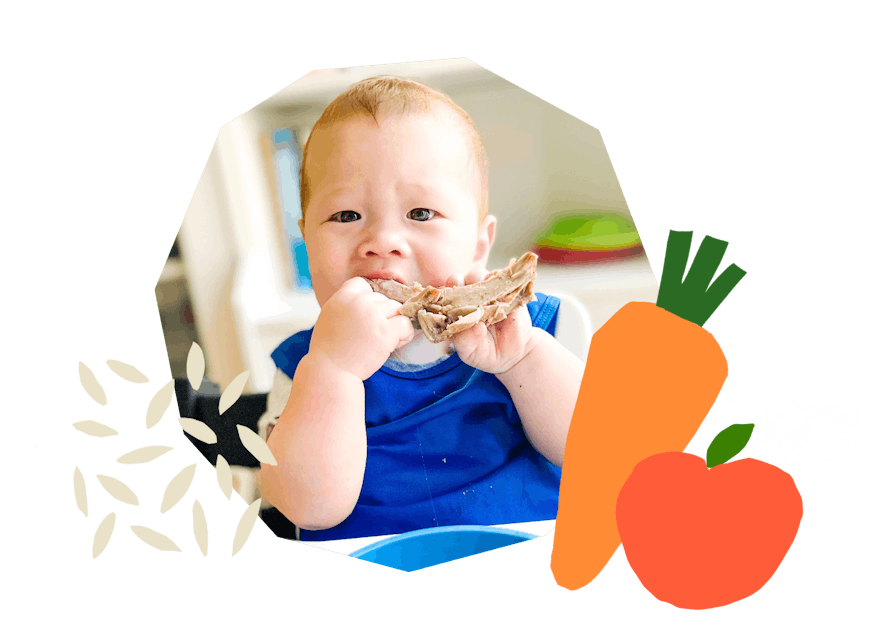
The Program Baby-Led Weaning with Katie Ferraro
A step-by-step digital program for starting solid foods safely and navigating the original 100 FIRST FOODS™ meal plan with baby-led weaning.
 EXPERT-LED, PROVEN APPROACH TO EATING REAL FOOD
EXPERT-LED, PROVEN APPROACH TO EATING REAL FOOD CONCISE VIDEO TRAININGS TO MASTER BABY-LED WEANING
CONCISE VIDEO TRAININGS TO MASTER BABY-LED WEANING 100 FIRST FOODS DAILY MEAL PLAN WITH FOOD PREP VIDEOS
100 FIRST FOODS DAILY MEAL PLAN WITH FOOD PREP VIDEOS
Baby-Led Weaning for Beginners Free Workshop
Is your baby ready to start solid foods, but you’re not sure where to start? Get ready to give your baby a solid foundation to a lifetime of loving real food…even if you’re feeling overwhelmed or confused about this next stage of infant feeding.
Get baby-led weaning recipes and tips delivered to your email inbox.

